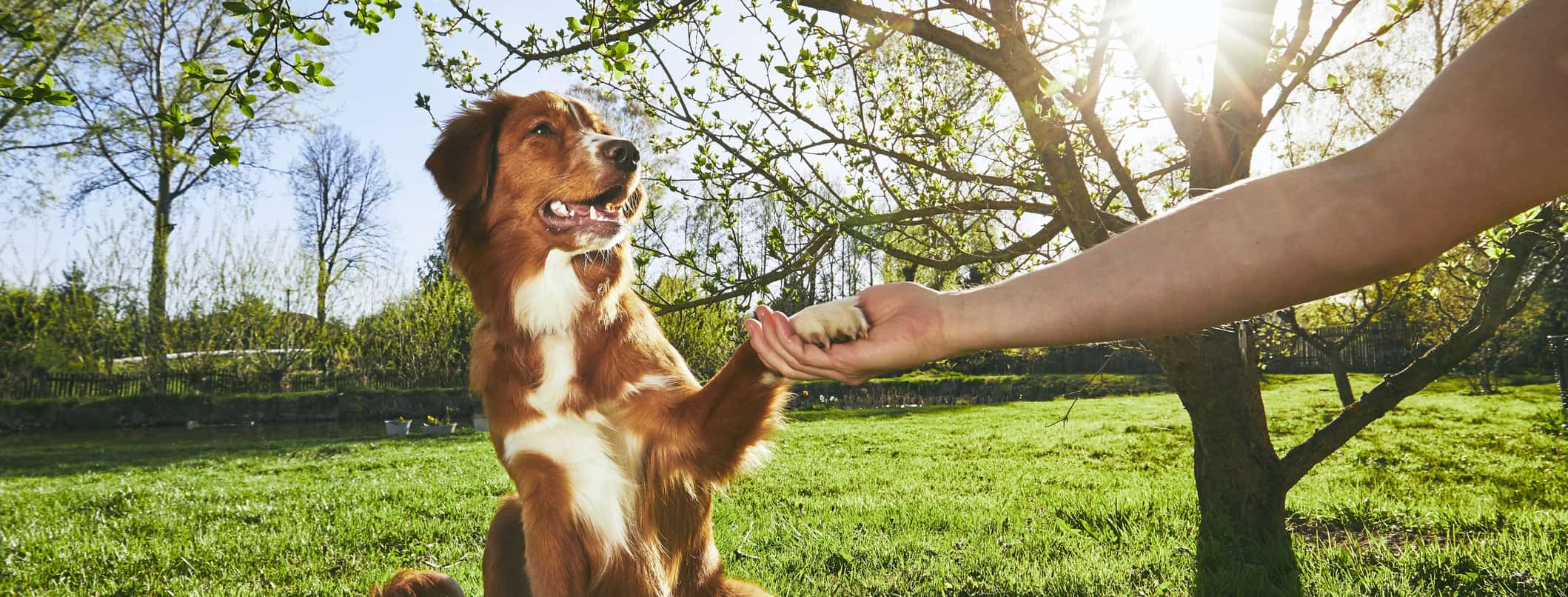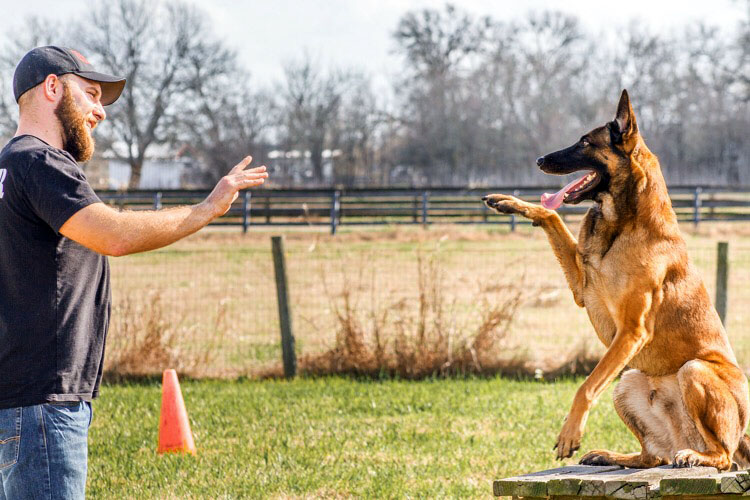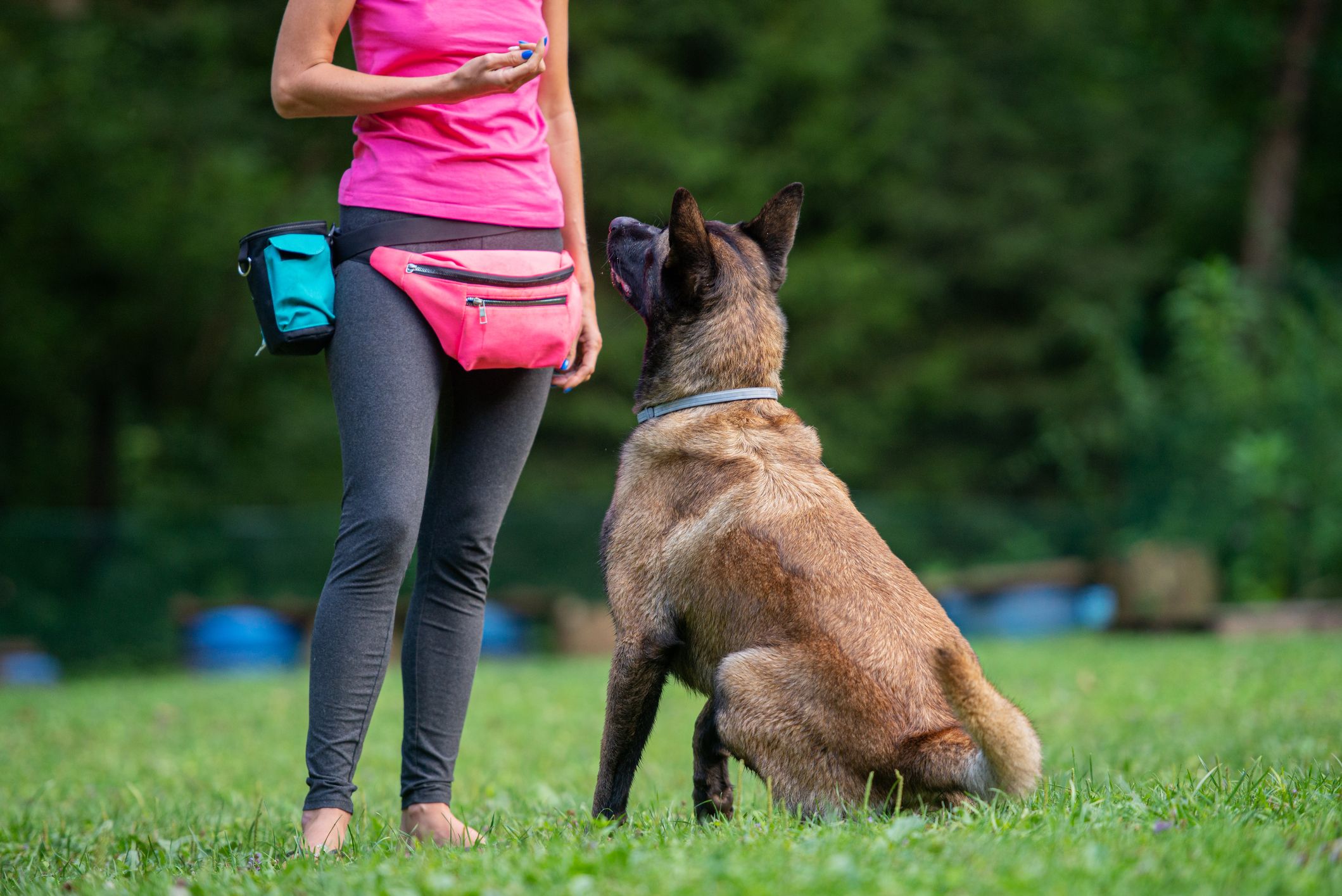Vital Tips for Effective Dog Training: A Guide for Pet Dog Owners
Reliable pet dog training is a complex procedure that calls for a critical approach customized to both the animal's temperament and the owner's objectives. Recognizing just how to navigate these barriers can dramatically improve the training experience, ultimately changing the connection in between proprietor and canine.
Comprehending Canine Habits
Recognizing pet dog behavior is vital for reliable training and promoting a harmonious connection between dogs and their owners. Dogs connect mainly with body language, vocalizations, and actions, making it critical for proprietors to translate these signals precisely. Acknowledging a canine's stance, tail position, and ear alignment can give understandings right into its psychological state. For example, a wagging tail does not constantly suggest happiness; it can also indicate excitement or anxiety.

Socializing plays a substantial role in pet dog behavior; exposure to various settings, individuals, and other pets can significantly influence a dog's personality. Factors such as type qualities and individual character should guide training approaches, as some breeds might have details behavior characteristics that require tailored methods. By comprehending these aspects, proprietors can develop a helpful environment that motivates positive habits, leading to successful training outcomes and a much deeper bond with their pets.
Establishing Constant Commands
Reliable communication with your pet dog begins with establishing constant commands. This fundamental component of training is essential for promoting understanding between you and your pet dog. Consistency in the commands you use makes certain that your canine can reliably connect specific words or expressions with the desired actions.
When choosing commands, select clear, distinct words that are easy to separate and claim from one an additional. Prevent utilizing similar-sounding commands that may confuse your pet. For instance, making use of "sit" and "stay" is ideal, however "rest" and "hit" might result in misconceptions.
Additionally, preserve the same tone and volume for every command. Pets are delicate to vocal hints, so varying your tone can develop confusion.
It is just as essential to make certain that all member of the family get on the exact same web page relating to the commands used. A united front in command use will prevent blended signals and enhance the understanding procedure.
Positive Support Methods
The power of positive support in pet training exists in its ability to encourage desired habits through rewards and appreciation. This technique is based in the principle that behaviors adhered to by beneficial results are much more most likely to be duplicated. By integrating positive support right into your training routine, you can successfully form your canine's behavior in a useful way.
To apply positive reinforcement, it's necessary to determine what encourages your pet dog, whether it be treats, playthings, or spoken appreciation. When your pet carries out a wanted activity, such as remaining on command, right away award them with a treat or love. This association in between the command and the favorable end result strengthens their understanding.
It's critical to timing the incentives properly; supplying the support within seconds of the preferred actions helps your pet dog make the connection (dog training). Additionally, uniformity is essential-- ensure that all member of the family make use of the exact same commands and reward systems to stay clear see this here of complication

Progressively, you can decrease the regularity of treats as your pet learns the behavior, transitioning to praise or recurring rewards. This technique not only fosters a solid bond in between you and your canine yet also advertises a favorable understanding setting, making training a pleasurable experience for both.
Socialization and Communication
Continually subjecting your pet to a variety of settings, people, and other pets is essential for their social advancement. Socializing ought to begin early, ideally during the critical home window of 3 to 14 weeks, when pups are most responsive to brand-new experiences. Older dogs can additionally benefit from ongoing socialization efforts.
Introduce your canine to different settings, such as parks, pet-friendly stores, and city locations. This exposure helps them adapt to numerous stimulations, reducing anxiousness and worry actions. Urge favorable Full Report communications with various other pet dogs and individuals, making sure that these encounters are secure and controlled to cultivate confidence.
Use structured playdates with courteous canines, as this can enhance your canine's social abilities and show them suitable behavior. Obedience courses and training sessions also give excellent opportunities for socializing, enabling your pet dog to connect with others in a supervised setting.
Display your canine's body language during interactions, as this will certainly aid you determine their convenience degree. Progressively increase exposure to even more tough situations while guaranteeing that each experience is favorable. A well-socialized pet is most likely to exhibit balanced habits, making them a joy to have in any kind of setting.
Dealing With Typical Training Obstacles
Every canine owner will certainly encounter training challenges eventually, regardless of their dog's age or socialization degree. Determining typical concerns such as stubbornness, disturbances, and terror can assist in establishing effective methods for renovation.

Gradually introduce disturbances as the pet becomes much more competent in commands. Short, regular training sessions are likewise efficient in maintaining interest.
Terror can hinder a pet dog's learning process. Gradual desensitization to the source of concern, paired with favorable support, can aid minimize anxiety. Perseverance is vital; never ever compel a dog right into a circumstance that creates distress, as this may aggravate the concern.
Eventually, understanding and addressing these usual difficulties with an organized strategy will certainly promote a much more productive training experience, reinforcing the bond in between dog and owner while advertising efficient discovering.
Conclusion
In summary, successful pet dog training counts on an extensive understanding of canine habits, the facility of constant commands, and the application of favorable support methods. Socialization plays a vital duty in developing well-adjusted pets, while resolving typical training challenges requires patience and flexibility. By carrying out these essential methods, animal proprietors can promote a solid bond with their canines and advertise desirable behaviors, eventually causing an unified relationship in between people and their canine companions.
Recognizing pet habits is crucial for effective training and fostering an unified connection in between pooches and their proprietors.Socialization plays a considerable function in pet behavior; exposure to different settings, people, and other pets can significantly influence a dog's personality.The power of favorable reinforcement in dog training lies in its ability to encourage desired actions through incentives and praise. By integrating positive support into your training routine, you can successfully form your pet's habits in a constructive manner.
In recap, successful pet training relies on a detailed understanding of canine behavior, the establishment of consistent commands, and the application of positive reinforcement methods.